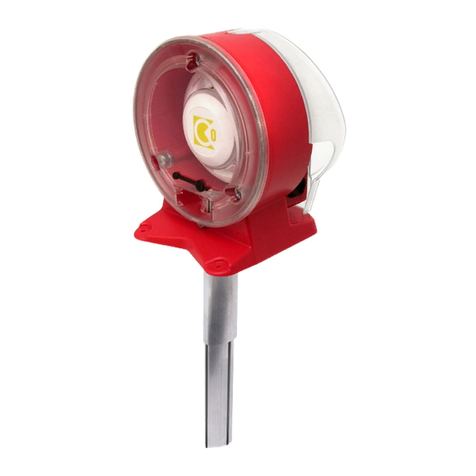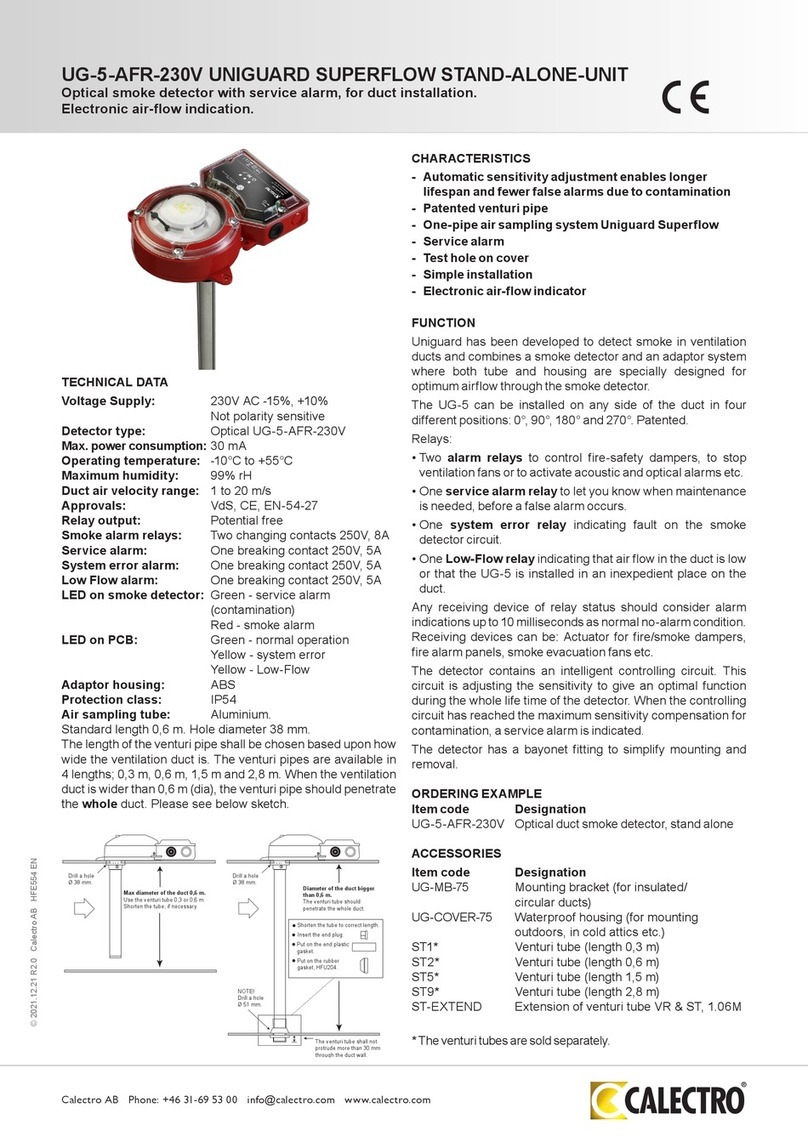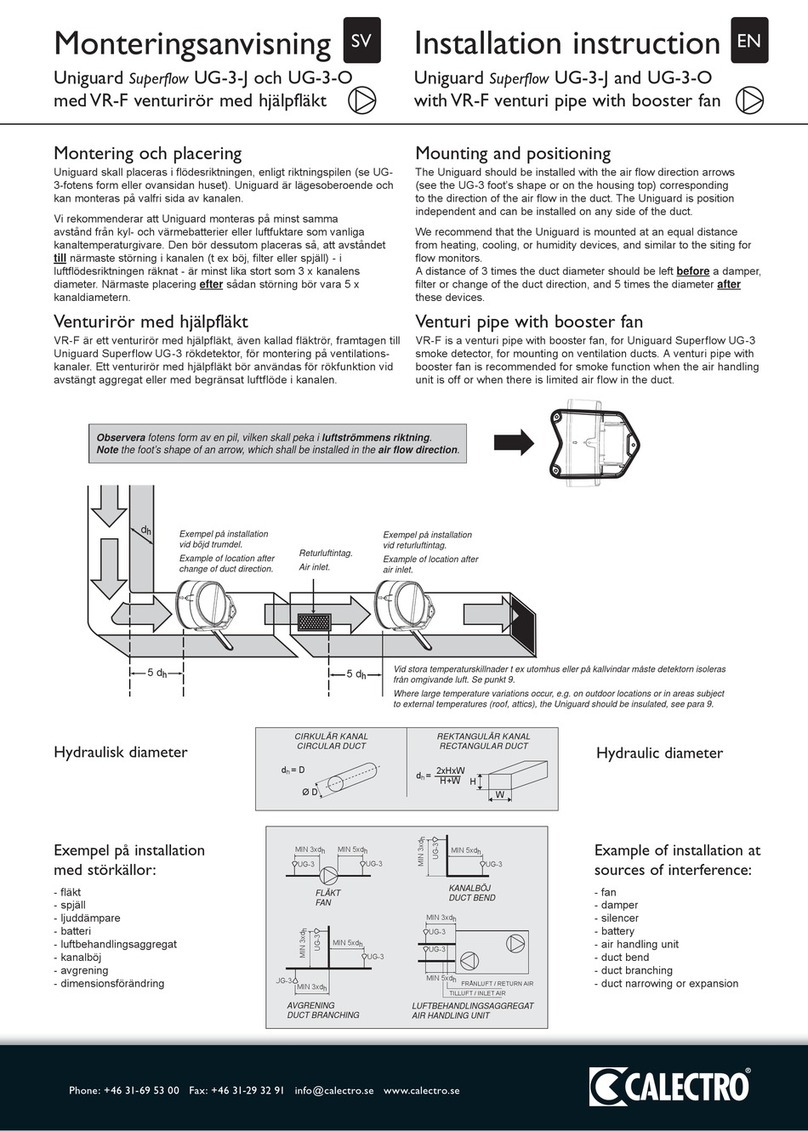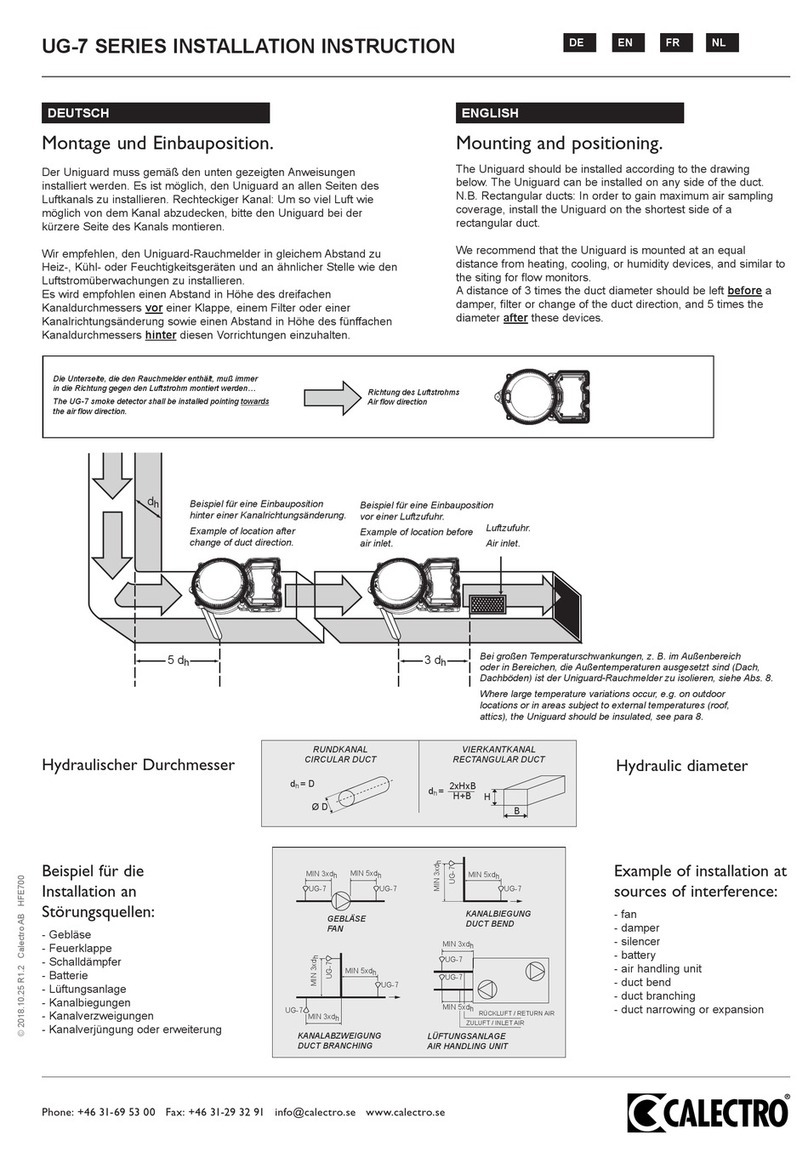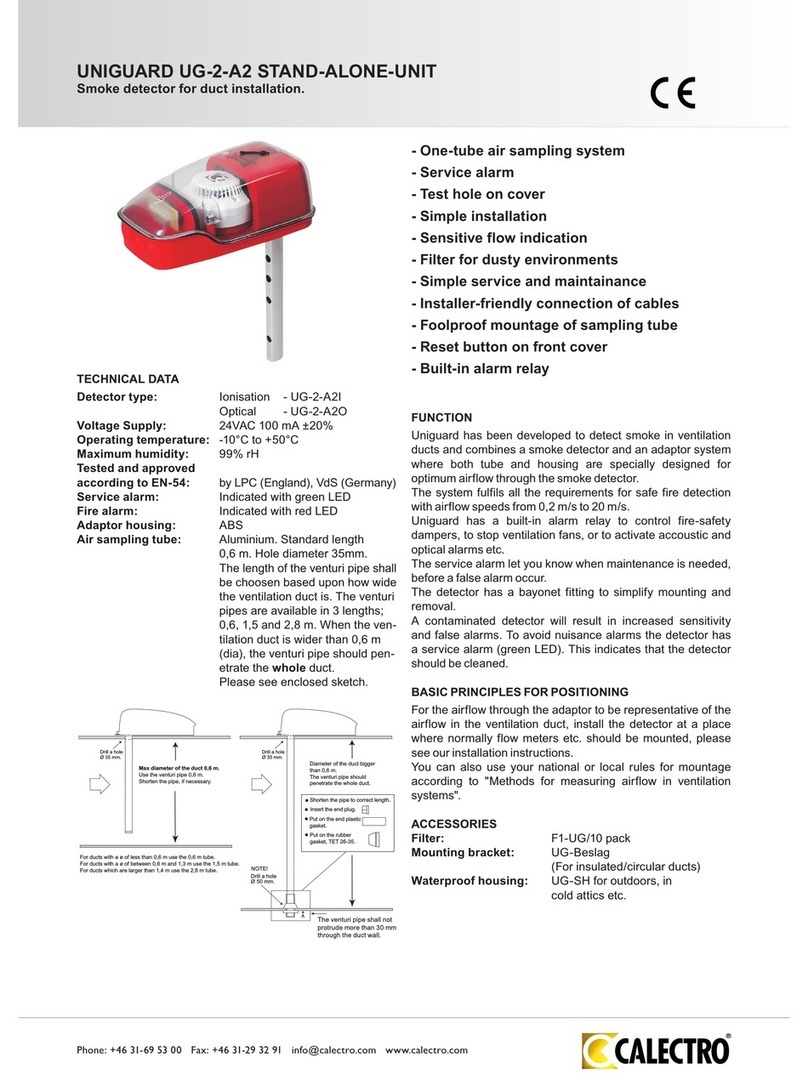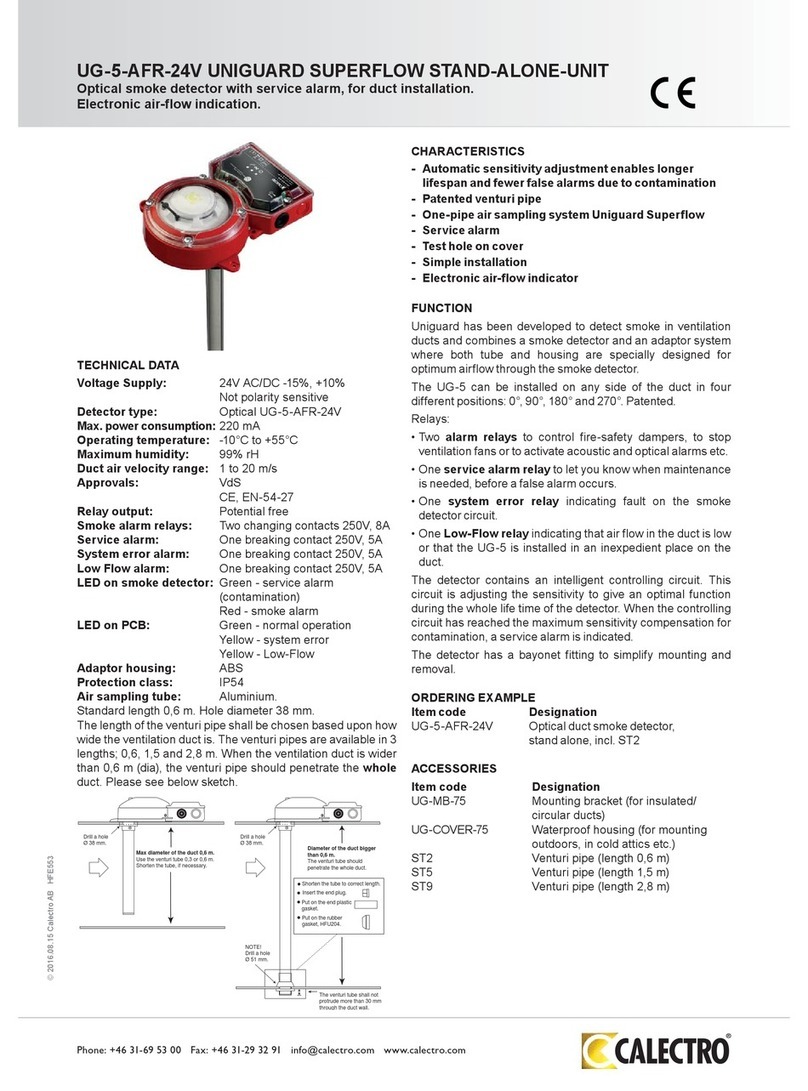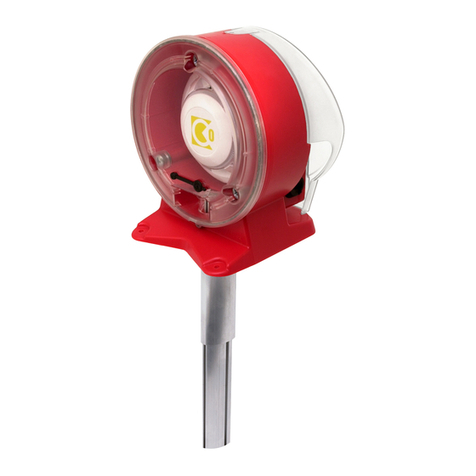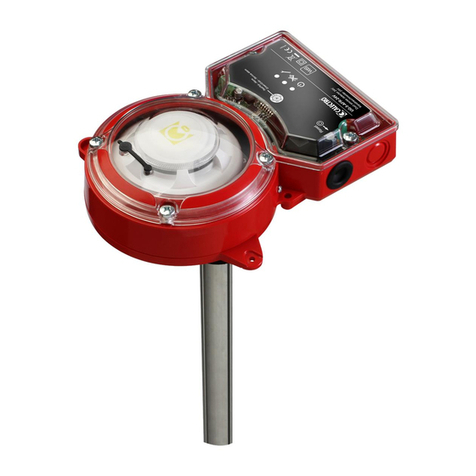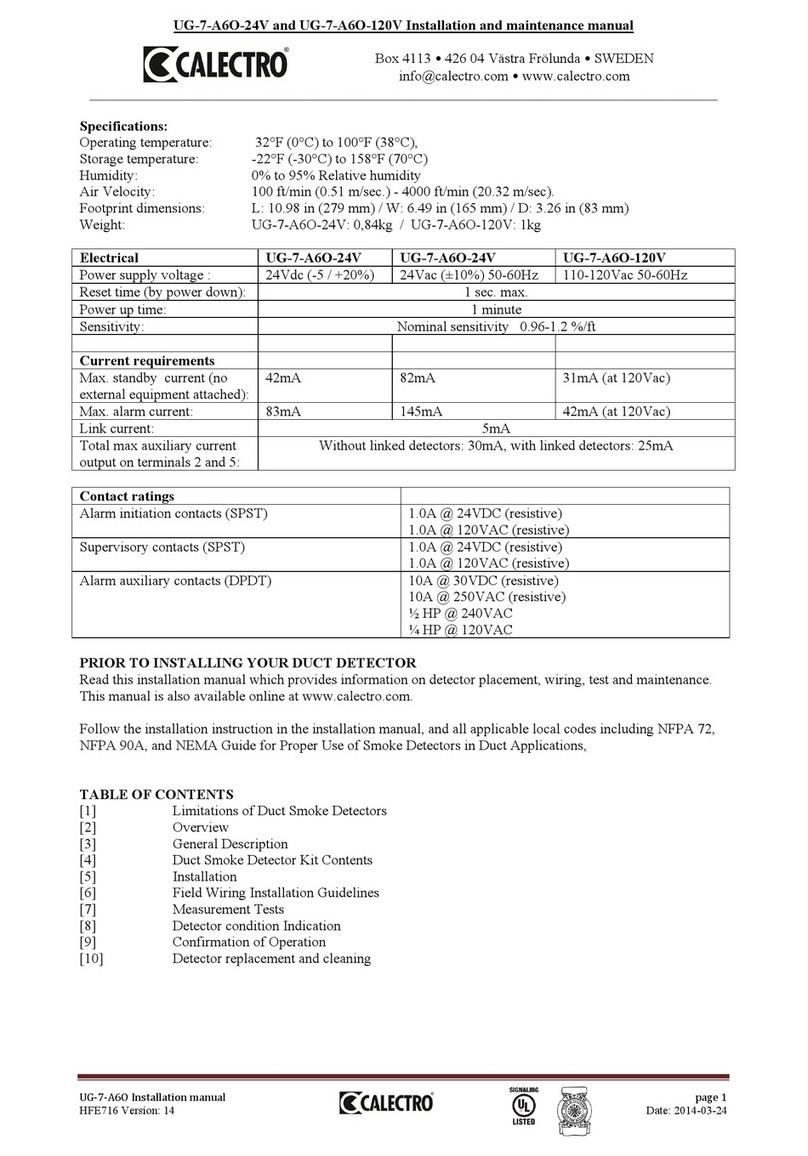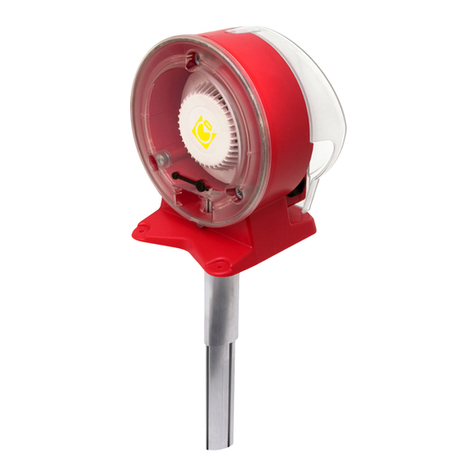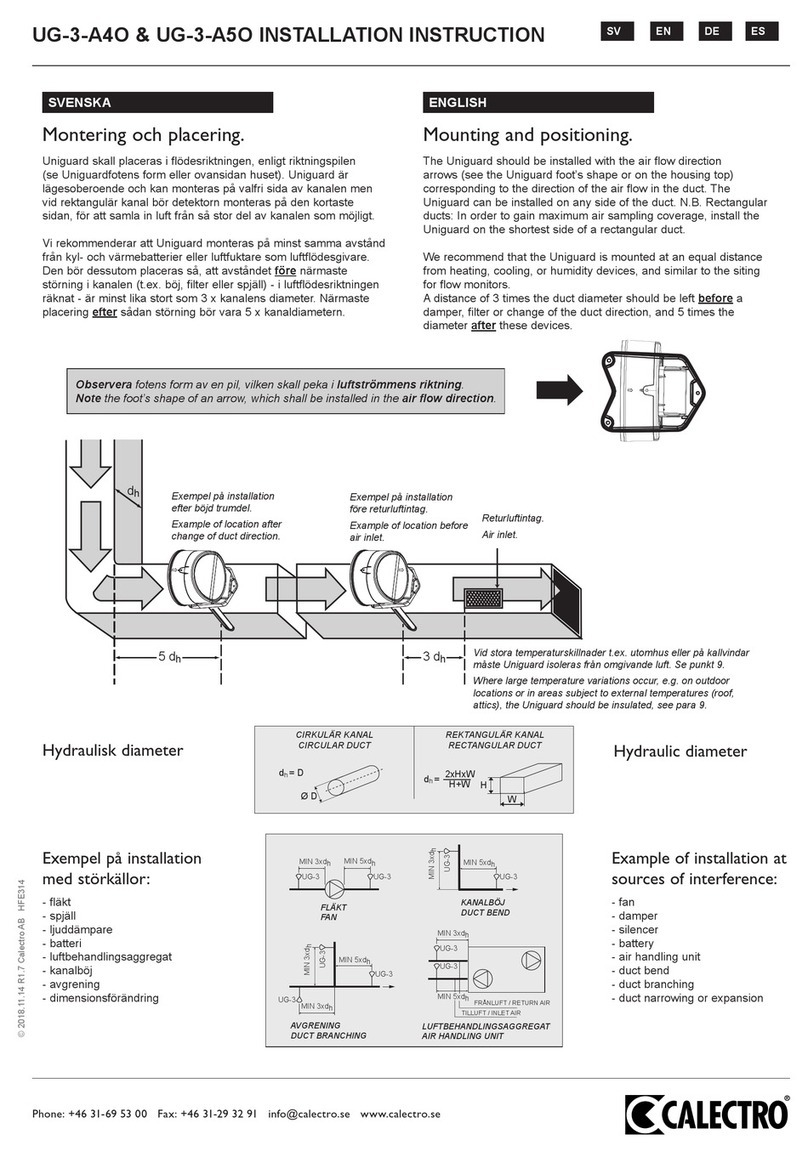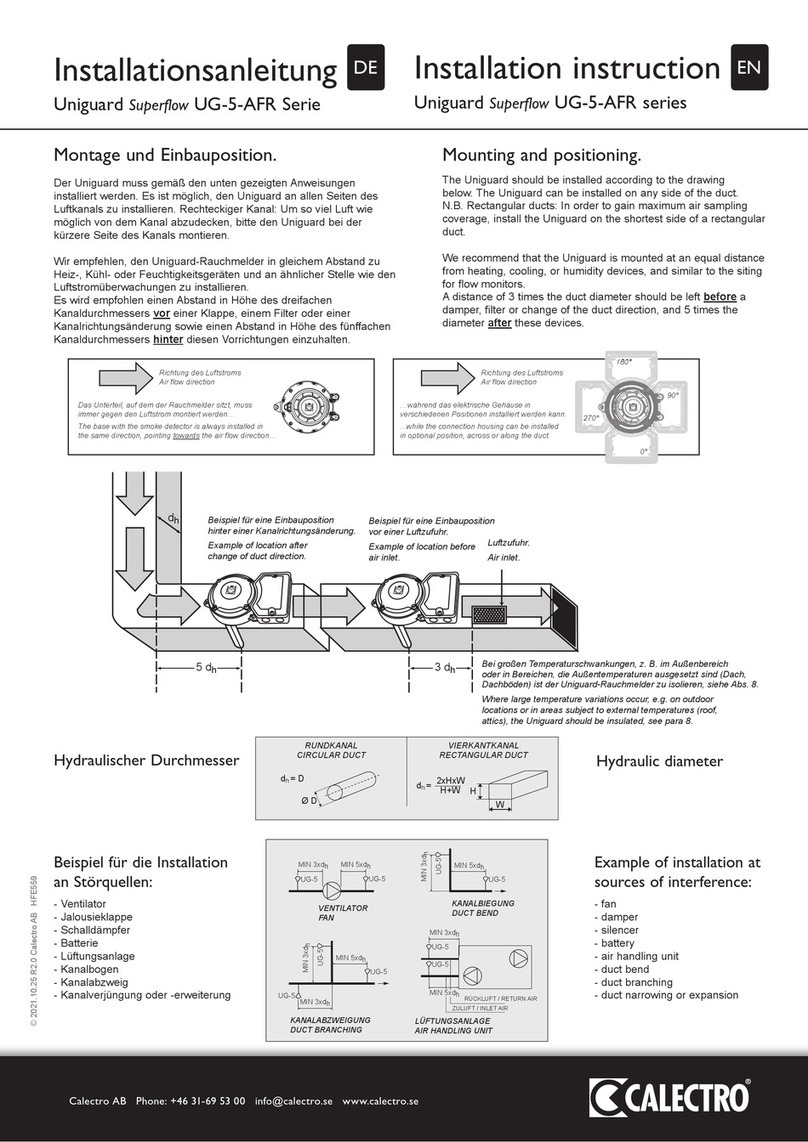
2
1
2
3
Drill a hole in the duct
Cut the venturi sampling tube
1. Measure the diameter of the duct.
2. The tube should penetrate at least 90% of
the width of the duct. NOTE! See para 3.
3. Shorten the sampling tube, if necessary.
4. Insert the end plug.
Fitting of tubes in ducts with different diameters
Shorten the tube to correct length.
Insert the end plug.
Put on the end plastic
gasket.
Put on the rubber
gasket, HFU204.
NOTE!
Drill a hole
Ø 51 mm (2").
ST-EXTEND
Drill a hole
Ø 38 mm (1,5")
Drill a hole
Ø 38 mm (1,5")
Max diameter of the duct 600 mm (2 ft).
Use the venturi tube 280 or
580 mm (1 or 2 ft).
Shorten the tube, if necessary.
For ducts with a ø of less than 0,6 m use the 0,6 m pipe.
For ducts with a ø of between 0,6 m and 1,4 m use the 1,5 m pipe.
For ducts which are larger than 1,4 m use the 2,8 m pipe.
The venturi tube shall not
protrude more than 30 mm (1")
through the duct wall.
Diameter of the duct larger
than 600 mm (2 ft).
The venturi tube should penetrate
the whole duct. Extend with
one or more extention tubes.
For ducts up to 300 mm (1 ft), use ST280.
For ducts between 300-600 mm (1-2 ft), use ST580.
For ducts over 600 mm (2 ft), extend the tube with
ST-EXTEND.
When using ST-EXTEND, the tube must always be attached
to the opposite duct wall, together with rubber gasket HFU204.
If strong vibrations occur in the venturi tube, we recommend
stabilizing the tube further, e.g. with mounting strap.
2
1
3
4
≥ 90%
100%
9
ø 38 mm (1,5") ø 51 mm (2")
Ø > 200 mm (2/3 ft)
1. For all ducts larger than 200 mm (2/3 ) hydralic diameter,
the UG8 can be mounted directly on the duct.
2. If the duct is insulated or smaller than 200 mm (2/3 ),
use mounting bracket UG-MB-8.
1
2
